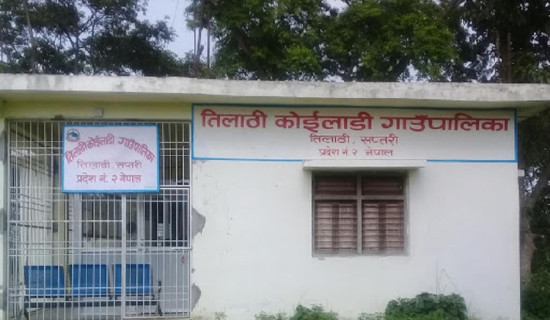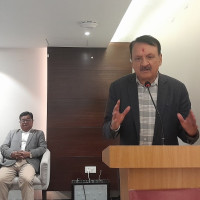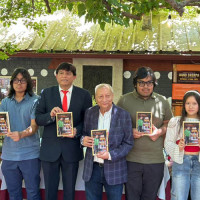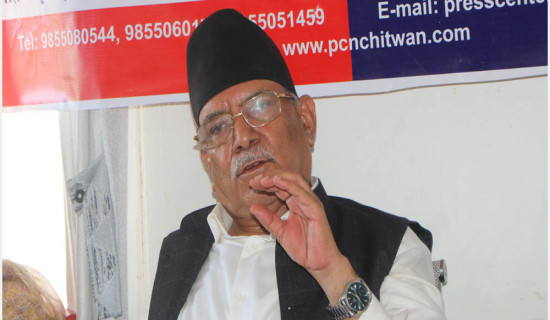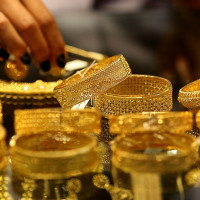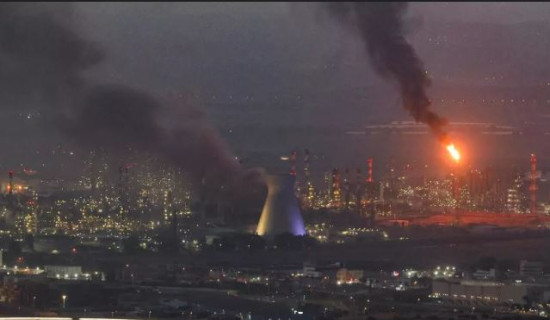- Tuesday, 17 June 2025
Cultural photography poses challenges
BY SUSHMA MAHARJAN,Kathmandu, June 17: A growing num ber of young Nepalis are taking up cultural photography, capturing the country’s vibrant festivals, traditions, and lifestyles. However, while passion drives this growing interest, many face challenges turning it into a sustainable career.
“I had always been fascinated by festivals and jatras since childhood,” said Mani Ratna Shahi, a Bachelor’s student in the management stream who began photography after the COVID-19 pandemic. Inspired by his father, a professional photographer, Mani started learning with his father’s cameras and lenses. “My interest turned into passion once I began photographing festivals. Beyond photography, I started learning about my community and cultural stories.”
His passion for photography even earned him first place in the Jatrai Jatra Photo Competition, held recently in Kathmandu. He said culture photography brings recognition, and even small acknowledgements bring happiness to young photographers. “However, it is sad that we are not getting much financial return in this field,” he added.
“Though cultural photography sharpens one’s skills and brings recognition, it’s tough to make a living out of it. While commercial photographers are well-paid, cultural photographers often face low pay and limited opportunities. Many young photographers, like me, have to juggle side hustles to survive,” he added.
Meanwhile, senior photographer Shakil Thapa acknowledges that despite low financial returns, youth participation in cultural photography has risen significantly. “About 15 years ago, only professionals and media houses covered cultural events. But with the rise of social media and its widespread use, young people now see cultural photography as a platform for exposure,” he said.
Many youths initially step into cultural photography to learn the skill and gain recognition, he said. “Culture varies from community to community and generates strong human interest. It’s not just about festivals and jatras, culture includes lifestyle, art, architecture, and inscriptions, in all of which Nepal is rich. Nepal’s cultural heritage fascinates not only locals but also people internationally. For example, who isn’t interested in the Living Goddess Kumari or the hand-pulled chariot festivals?” he added.
He further said that modern technology had made cultural photography more accessible and appealing.
“With digital cameras and instant previews, photographers can review and improve their shots immediately. This was difficult in earlier days due to expensive and limited equipment.”
While the passion for cultural photography runs deep, sustaining a livelihood solely through it remains an ongoing challenge for many young practitioners. For most, the reality is that there is little or none financial return despite the dedication and time invested.
“For us youths, cultural photography is mostly a passion. We aren’t associated with institutions, and it's difficult to survive financially in this field,” said Ridish Maharjan, a bachelor-level student who has been photographing for seven years. “What we get in return is recognition and self-satisfaction for promoting our own culture on bigger platforms.”
According to Ridish, cultural photography, however, still offers a valuable foundation to build broader photography skills. "One can start here and later explore specialised fields," he said. "For instance, I once tried Thanka photography, but it requires more advanced equipment and skills that are financially out of reach for many of us."
He further added, “There is very little financial reward despite the hard work it demands. Equipment are expensive, and there are limited opportunities to earn from cultural photography alone. Most of us do it out of love for our culture.”
Similarly, Nirnit Budhathoki, 22, from Putalisadak, faces the same challenges in cultural photography. He said that basic camera equipment cost at least Rs. 150,000, while advanced gear can exceed Rs. 500,000. “Along with photography skills, cameras and lenses play a vital role in taking a good picture. We invest both our time and money, but what we gain is mostly self-satisfaction and free subjects to practice on,” he said. “If there were a market for cultural photography, like there is for commercial, fashion, or wildlife photography, I believe it could truly become a viable career."



